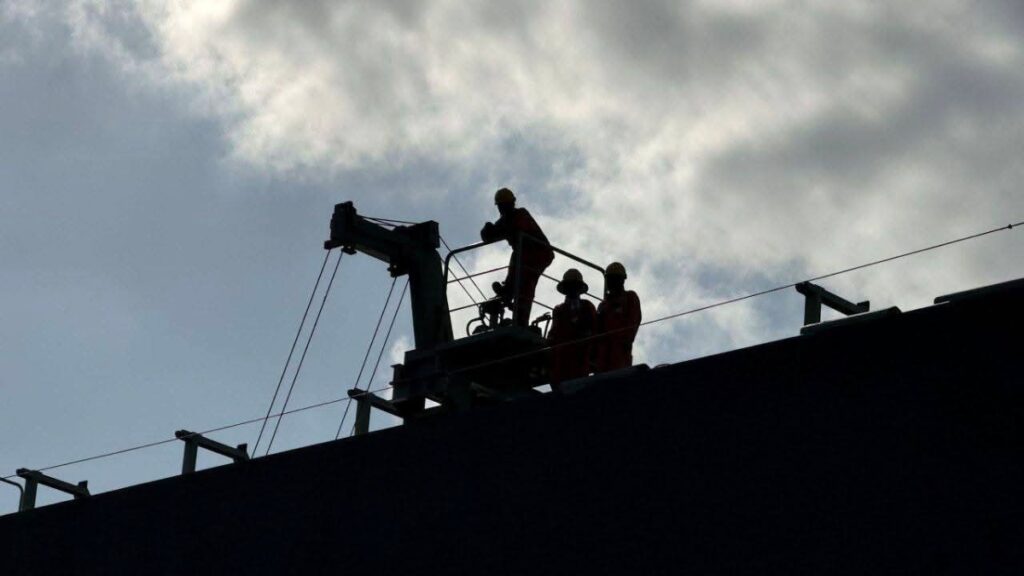
Syria has reached a significant milestone in its economic recovery with the export of its first crude oil shipment in 14 years. On Monday, 1 September 2025, 600,000 barrels of heavy crude were dispatched from the port of Tartous aboard the tanker Nissos Christiana, as announced by the Syrian Ministry of Energy.
The shipment, facilitated through a deal with B Serve Energy signals Syria’s return to the international energy market following a prolonged absence due to conflict and sanctions.
Riyad al-Joubasi, Assistant Director for Oil and Gas at the Ministry of Energy, described the move as a pivotal moment for the country’s oil sector. “This shipment represents a relaunch of Syria’s oil industry and its reintegration into international markets,” Joubasi told Reuters. The ministry did not disclose the origin of the crude, though the majority of Syria’s reserves are located in the northeast, a region currently under the control of Kurdish-led authorities.
A War-Torn Industry
Prior to the outbreak of civil war in 2011, Syria exported approximately 380,000 barrels of oil per day, providing a major boost to the national economy. Oil accounted for 20% of GDP and over half of state revenues in 2010, according to Euronews. However, the conflict — triggered by widespread protests against former President Bashar al-Assad — devastated infrastructure and crippled oil production, which had plummeted to just 40,000 barrels per day by 2023.
The fall of Assad’s regime in December 2024 paved the way for an Islamist-led government, which has prioritised economic revitalisation.
While most of Syria’s oil fields are situated in the northeast, they have been largely controlled by the Kurdish-led Syrian Democratic Forces (SDF). Although the SDF began supplying oil to the central government in Damascus in February 2025, relations have since soured amid growing concerns over minority rights, particularly for the Kurdish population. During the conflict, control of these fields shifted frequently, and Western sanctions further obstructed legal oil exports and imports.
Sanctions Eased, Prospects Revived
A major turning point came in June 2025, when US President Donald Trump signed an executive order lifting American sanctions on Syria — excluding those targeting Assad, his inner circle, and entities associated with human rights violations or terrorism. The move opened the door for US-based companies including Baker Hughes, Hunt Energy and Argent LNG to draft a comprehensive master plan for Syria’s oil, gas and electricity sectors, Reuters reported.
The easing of sanctions has also enabled Syria to explore new trade and investment prospects. In a significant parallel development, Syria signed an $800 million memorandum of understanding with Dubai-based DP World to develop and operate a multi-purpose terminal at the port of Tartus. The agreement replaces a previous contract held by a Russian firm during Assad’s tenure and underscores a shift towards new international partnerships in rebuilding the Syrian economy.
Strengthening Regional Ties
On 2 September 2025, Syria’s General Petroleum Corporation hosted a technical meeting with representatives from four Saudi companies to discuss cooperation in the oil and gas sectors. The meeting, which aimed to implement recent memoranda of understanding, featured presentations on the capacities of the Saudi firms and outlined plans for field visits to Syrian oil and gas facilities.
These discussions are intended to accelerate the development of Syria’s energy infrastructure and increase gas output — key pillars in the broader recovery effort.
The Ministry of Energy also presented investment opportunities at the 62nd Damascus International Fair, showcasing models and maps of oil and gas blocks, alongside mineral resource data, in a bid to attract foreign investors. These initiatives reflect Syria’s ambition to revive its energy sector and harness natural resources as a foundation for economic growth.
A Tentative Step Forward
The shipment from Tartus marks a crucial step in Syria’s journey towards post-war economic reconstruction. Authorities in the governorate stated that the export is intended to “strengthen Syria’s presence in global oil markets”. With sanctions eased and new alliances emerging, Syria appears poised to reclaim its role as an energy exporter.
Nonetheless, significant challenges remain — including unresolved tensions with Kurdish authorities and the need for extensive infrastructure rebuilding. Still, the successful export of 600,000 barrels offers a rare glimmer of hope for an economy ravaged by years of conflict. The international community will be closely observing Syria’s next moves as it seeks to rebuild its energy sector and reassert its place in the global marketplace.
